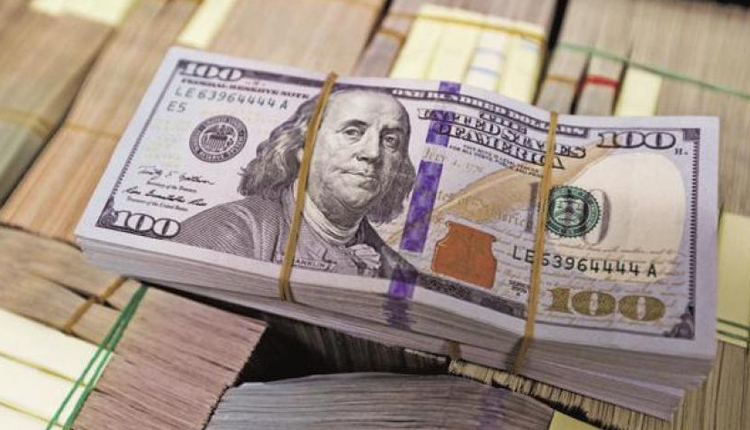The dollar fell broadly on Tuesday as U.S. Treasury yields slipped, feeding fears that the Federal Reserve could pause in its rate-hike cycle, while an inversion in part of the yield curve was taken as a red flag for a potential recession.
The dollar, which started the week on a weak footing as a thaw in trade tensions between Washington and Beijing sapped demand for the safe-haven greenback, extended its fall as investors fretted about an inversion of the short end of the U.S. yield curve in bond markets.
The curve between U.S. three-year and five-year Treasury notes and between two-year and five-year notes inverted on Monday – the first parts of the Treasury yield curve to invert since the financial crisis, excluding very short-dated debt.
Analysts expect the two-year, 10-year yield curve- seen as a predictor of a U.S. recession- to follow suit.
While interest rate hikes have sent short-dated yields higher, tepid inflation and slowing economic growth expectations have kept longer-dated yields pinned down.
The dollar was 0.75 percent lower against the Japanese yen, which tends to benefit during geopolitical or financial stress as Japan is the worlds biggest creditor nation. The euro was 0.11 percent lower.
On Wednesday, Federal Reserve Chairman Jerome Powell said U.S. rates were nearing neutral levels, which markets interpreted as signaling a slowdown in rate hikes.
The yield curve inversion and comments from Fed speakers are causing investors to rethink the potential of a recession or if rate hikes are nearing the top, said Minh Trang, senior FX trader at Silicon Valley Bank in Santa Clara, California.
“If that’s the case, obviously the dollar has had a nice run, I think we may be seeing the top on the dollar,” he said.
Against a basket of six major currencies the dollar was down 0.29 percent at 96.761 earlier, its lowest since Nov. 22. As of 2:03 p.m. ET, it was 0.07 percent lower on the day.
As uncertainty lingered regarding China and the United States’ ability to resolve their trade war, currency market investors remained optimistic. The Australian dollar, viewed as a barometer of Chinese growth, clung to gains from Monday and emerging market currencies edged higher.
The dollar fell half a percent against the offshore yuan to 6.8343, its weakest since September.
Sterling rose after a senior European Union legal adviser said Britain could unilaterally withdraw its Brexit notice, easing investors concerns about Britain crashing out of the bloc in March without a deal.
Source: Reuters
